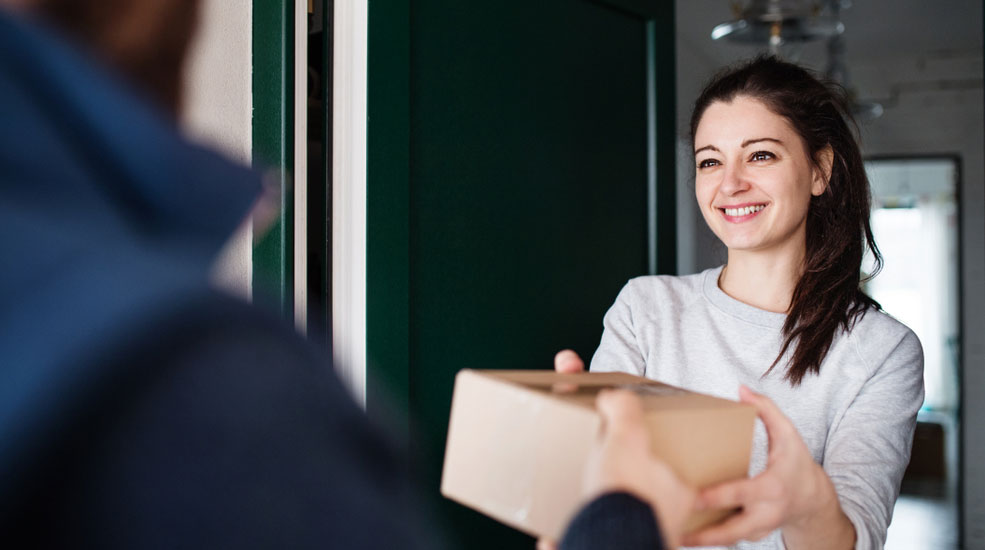Customer preferences, not speed, are king for delivery in the age of experience, according to Matthew Robertson, co-CEO, NetDespatch
We live in an age of experience. You don’t have to look far to find evidence that, going into 2020, customer experience is overtaking price and product as the primary brand differentiator. As e-commerce continues its upward trajectory, with almost 20% of all retail purchases in the UK now made online, a core part of that experience is when and how products are delivered.
Getting purchases to customers is a prime challenge for businesses and our latest research into the parcel delivery landscape in the UK, carried out in September 2019, explored whether they are successfully rising to it. We surveyed more than 2,000 adults to find out what they really want from their delivery experience and how this compares with what they are being offered. Here’s what we found…
Speed – it’s not the panacea for a good delivery experience
There’s an abiding assumption in our industry that customers want near-instant gratification when it comes to delivery, that faster is always better. However, when we asked our respondents how important delivery speed was, only 3% said they specifically wanted same-day delivery; 29% were happy with next-day delivery; and the majority – 62% – were quite happy with receiving their purchase in a two- to five-day window. Our findings tally with research from Apex Insight, which earlier this year found that customer take-up of same-day delivery currently stands at 1%.
So, there’s clearly a difference between ‘fast’ and ‘fast enough’ and it’s a distinction that businesses would be advised to respect to avoid focusing efforts, and budgets, in the wrong area.
What really counts for a good delivery experience are clear communications and predicted delivery slots. Some 96% of respondents said order confirmations were important in a positive delivery experience and 92% said the same about delivery confirmation. Nine in 10 respondents said a predicted delivery slot was important. Customers are more interested in ‘when?’ rather than ‘how soon?’ and it is clear that getting basic communications right is still a critical part of the delivery process.
Ignore customer preferences at your peril
Although consumers maybe more relaxed on speed of delivery, ignore their specific requirements and you’ll lose out; 41% say they will only buy from suppliers that offer their preferred options. These include delivery at a time when they will be at home and the option to have items delivered to a safe place or left with a neighbor.
When it comes to the thorny issue of missed home deliveries, it seems carriers can do better. Over half of respondents said that when they missed a home delivery, carriers didn’t follow their preferred options, instead leaving parcels in unauthorized locations, including a worrying 20% who said parcels were simply left on the doorstep.
These are not difficult issues for suppliers to rectify through better communication about preferences and ensuring that carriers subsequently following them. They are clearly important to buyers, so this is something that businesses should prioritize if they want to improve the delivery experience, and with it, the overall perception of their brand.
Home delivery remains favorite
The popularity of home delivery has waxed and waned over the years as more delivery options have been added to the menu, but our latest study found that having purchases delivered to the home is currently by far the preferred option; 82% of respondents said they prefer home delivery. In fact, only 15% of respondents had chosen to receive a parcel at their workplace in the month prior to our survey and, as a preference, only 10% wanted parcels delivered to their workplace. This could be a reflection of changing working habits – workers are far less tied to the office environment than they were and many more work from home at least part of the time, enabling them to more easily receive parcels.
Also notable was the lack of interest in alternative delivery options. Only one in five respondents had picked up purchases from a parcel shop and just 1 in 10 respondents had made use of parcel locker delivery in the previous month. This supports a general lack of interest in alternative self-service delivery options – 48% said they weren’t in favor of innovations such as in-boot and in-house delivery.
It’s all to play for in the competition of the carriers
The UK’s heritage delivery brand, Royal Mail, came out on top when respondents were asked if they had a preferred carrier due to delivery options, but they were chosen by only 23%. Half of respondents don’t have a preferred carrier due to delivery options, meaning there is room for a carrier to up their game and appeal to that 41% who won’t order from a supplier unless their delivery preferences are catered for.
Overall, our research showed that there is a disconnection between what is important to consumers, and what they are being offered. Speed is not as important as clear communication, delivery at a convenient time and taking the correct action when a delivery is missed. Customers are not generally interested in alternative delivery technologies and locations; they mostly want delivery to their home address, when it suits them. That is what they define as good customer experience.
Matching what customers want to what is provided is not a Herculean task; these are straightforward areas that can be improved. The challenge for retailers and carriers is resisting the seduction of the ‘faster, more innovative and unusual’ narrative and focusing, still, on getting the core proposition operating to a flawless standard.


